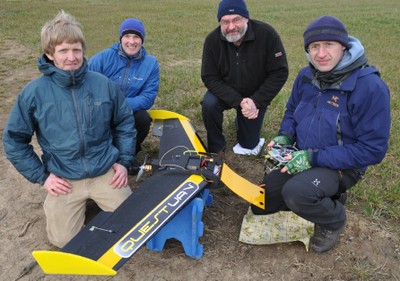Remotely Piloted Aircraft

RPA, previously known as Unmanned Aerial Vehicles, are aircraft that fly without an on-board pilot. The term can refer to anything from radio controlled helicopters that can fit in the palm of your hand to high altitude, long endurance (HALE) aircraft weighing over 14 tonnes.
A number of recent advances in technology have enabled simple and cheap "electric" RPA. These aircraft use light weight batteries and carrying miniaturised sensors, loggers or cameras. They have found favour with both research groups and hobbyist in part because of their simplicity (and therefore low cost) but also because, if designed with a take-off weight
It is this small-RPA technology that has been adopted by the environmental research community to make measurements that were previously difficult or even impossible. A few that SAMS aim to study are:
Aerial survey (photogrammetry) under low cloud,
Polar sea-ice extent in winter,
Turbulence inside wind farms,
Meteorological profiling on small islands or even in the middle of a loch.
To attain RPA capability, SAMS has worked to acquired not only suitable RPA the technology, but has invested in SAMS RPA Flight: the crew and facilities to operate RPA safely, legally. SAMS RPA Flight work with the scientist to plan measurements campaign, whilst engaging with sensor engineers and the CAA to ensure mission success.